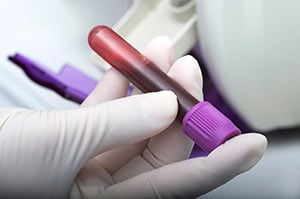Neuroendocrine Tumor Signs and Symptoms

Neuroendocrine cancer is a diverse group of tumors that originate in specialized cells in the pancreas, gastrointestinal tract, lungs and other tissues throughout the body. With traits of both nerve cells and hormone-producing cells, neuroendocrine cells receive signals from the nervous system and respond by producing and releasing hormones to control many bodily functions. Neuroendocrine tumors can be classified as functioning or non-functioning based on whether they produce hormones.
While neuroendocrine tumors are relatively rare compared to many other types of cancer, their incidence is on the rise, possibly due to improved detection techniques. Treatment can vary depending on factors such as the location, size and grade of the tumor, the extent of cancer spread (if any) and the patient’s overall health. Because neuroendocrine tumors can affect hormone levels, prompt treatment is important to prevent long-term effects, such as hormonal imbalances. Common options include surgery, chemotherapy, radiation therapy, targeted therapy and somatostatin analog therapy.
Early warning signs of a neuroendocrine tumor
Neuroendocrine cancer does not always produce noticeable symptoms, especially in its early stages. The warning signs can vary greatly depending on the location, size and hormonal activity of the tumor.
What does a neuroendocrine tumor feel like?
A common sensation associated with neuroendocrine cancer is abdominal discomfort, which can range from a dull ache to sharp or stabbing pain, particularly if the tumor is pressing on nearby organs or nerves. Some people also experience a feeling of fullness or bloating, especially after eating. Additionally, a large neuroendocrine tumor may create a mass that can be felt.
What does a neuroendocrine tumor look like?
The visible symptoms of neuroendocrine cancer can include flushing or redness of the skin. These effects may worsen in response to certain triggers, such as stress, alcohol and certain foods.
Other symptoms of a neuroendocrine tumor
Neuroendocrine cancer can also cause:
- Nausea and vomiting
- Diarrhea or constipation
- Abdominal swelling
- Unintended weight loss
- Weakness and fatigue
Symptoms of an advanced neuroendocrine tumor
 As neuroendocrine cancer progresses, its symptoms may become more pronounced. For instance, the associated abdominal pain may worsen and radiate toward the back or shoulder blades.
As neuroendocrine cancer progresses, its symptoms may become more pronounced. For instance, the associated abdominal pain may worsen and radiate toward the back or shoulder blades.
Additionally, an advanced functioning neuroendocrine tumor may cause symptoms related to hormone overproduction, such as:
- Low blood sugar (hypoglycemia)
- High blood sugar (hyperglycemia)
- Hormonal imbalances
- Carcinoid syndrome
Frequently asked questions (FAQs) about neuroendocrine tumor signs and symptoms
The following FAQs-related article provides additional information about neuroendocrine cancer signs and symptoms:
Benefit from world-class care at Moffitt Cancer Center
If you would like to discuss your neuroendocrine tumor symptoms with a specialist in Moffitt’s high-volume Gastrointestinal Oncology Program, you can request an appointment by calling 1-888-663-3488 or submitting a new patient registration form online. We do not require referrals.
